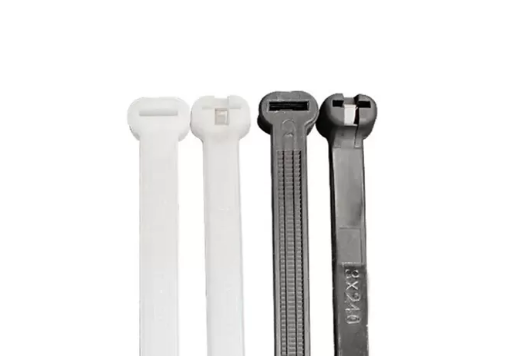How Much Weight Can a Heavy Duty Zip Tie Hold?
Heavy duty zip ties usually hold between 120 and 175 pounds. Some of the strongest zip ties can handle up to 350 pounds. This is the tensile strength of zip ties, or the maximum load it can support when stretched before breaking.
Heavy-duty zip ties are typically constructed from nylon or polypropylene, offering enhanced strength and durability compared to standard or lightweight variants. These ties are engineered to withstand greater tension and pressure, making them suitable for securing heavier loads and enduring more strenuous conditions.
The weight-bearing capacity of a zip tie depends on various factors:
1. Material Composition: The primary materials used in heavy-duty zip ties, nylon, and polypropylene, possess high tensile strength. Nylon zip ties, in particular, are known for their robustness and resistance to environmental factors such as moisture and UV rays. The specific grade and thickness of the material influence the tie's weight-bearing capacity.
2. Width and Thickness: Heavy-duty zip ties are available in different widths and thicknesses. Thicker and wider ties tend to have a higher weight-bearing capacity due to their increased cross-sectional area, allowing them to withstand more tension without breaking or failing.
3. Length: The length of the zip tie doesn't directly impact its weight-bearing capacity. However, longer ties may distribute the weight across a larger surface area, potentially enhancing their ability to hold heavier loads.
4. Quality and Design: The design quality, including the locking mechanism and the overall construction, significantly affects a zip tie's strength. High-quality heavy-duty zip ties often have reinforced heads or enhanced locking mechanisms that contribute to their ability to hold heavier weights securely.
5. Environmental Factors: Conditions such as temperature variations, exposure to sunlight (UV radiation), moisture, and chemical exposure can impact the strength and longevity of zip ties. Some ties are engineered to withstand harsh environmental conditions better than others.
Determining the precise weight-bearing capacity of a heavy-duty zip tie can be challenging due to the multitude of variables involved. However, manufacturers often conduct tests to provide approximate weight ratings for their products. These ratings are typically measured in pounds or kilograms and indicate the maximum load a zip tie can hold under ideal conditions.
For example, a heavy-duty zip tie with a width of 0.35 inches and a thickness of 0.1 inches might have a manufacturer-rated tensile strength of around 250 pounds. However, it's crucial to note that this rating serves as a guideline, and actual performance can vary based on usage conditions, installation technique, and other factors.
When using zip ties for applications where weight-bearing capacity is critical, it's essential to consider safety margins and avoid exceeding the specified weight limits. Overloading zip ties can compromise their integrity, leading to failure and potential safety hazards.
Real-World Applications and Factors Affecting Load Capacity:
In practical applications, the weight a zip tie can hold depends on various factors:
1. Distribution of Weight: How the weight is distributed across the zip tie matters. Concentrated weight in one spot might exert more stress than evenly distributed weight.
2. Environmental Factors: Conditions such as temperature variations, exposure to UV light, moisture, and chemicals can weaken the zip tie's material over time, affecting its load-bearing capacity.
3. Installation Technique: Proper installation, ensuring the zip tie is tightened securely without over-tightening, can maximize its strength.
4. Duration of Load: Prolonged exposure to weight or stress can weaken the zip tie over time, potentially reducing its load-bearing capacity.
Safety Precautions:
Regardless of the estimated weight capacity, it's essential to prioritize safety when using zip ties for securing objects or loads. Overloading zip ties beyond their recommended capacity can lead to failure and unexpected release, posing safety risks.
In summary, heavy-duty zip ties are designed to support significant loads, often ranging from several pounds to a few hundred pounds, depending on their specific characteristics and manufacturer specifications. However, actual weight-bearing capacity can vary based on multiple factors, and it's essential to use them within their recommended limits for optimal performance and safety.


